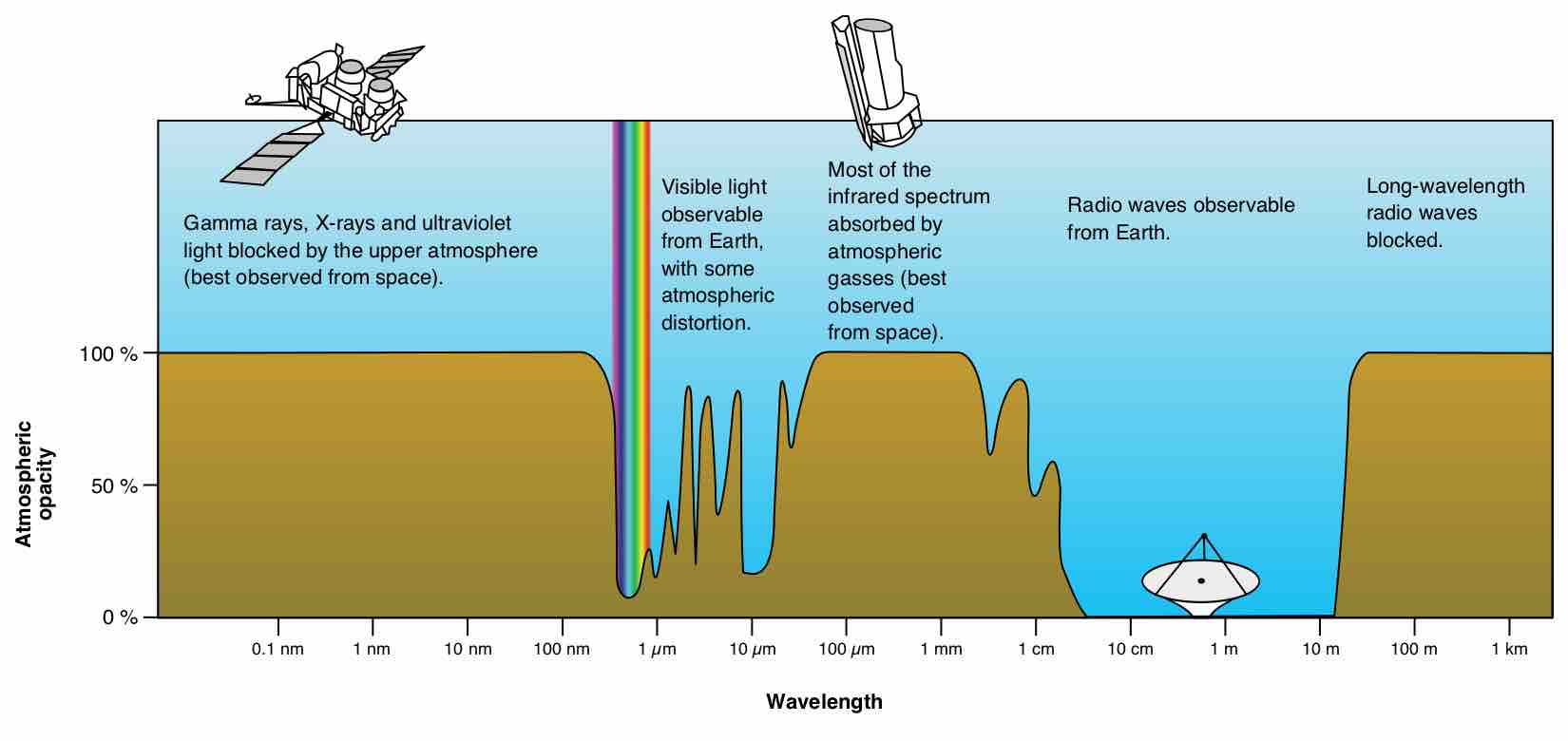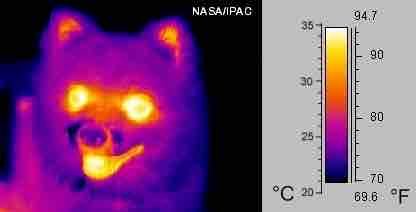Infrared Waves
Infrared (IR) light is electromagnetic radiation with longer wavelengths than those of visible light, extending from the nominal red edge of the visible spectrum at 0.74 micrometers (µm) to 1 mm. This range of wavelengths corresponds to a frequency range of approximately 300 GHz to 400 THz, and includes most of the thermal radiation emitted by objects near room temperature. Infrared light is emitted or absorbed by molecules when they change their rotational-vibrational movements.
Electromagnetic Spectrum
The electromagnetic spectrum, showing the major categories of electromagnetic waves. The range of frequencies and wavelengths is remarkable. The dividing line between some categories is distinct, whereas other categories overlap. Microwaves encompass the high frequency portion of the radio section of the EM spectrum.
Subcategories of IR Waves
The infrared part of the electromagnetic spectrum covers the range from roughly 300 GHz (1 mm) to 400 THz (750 nm). It can be divided into three parts: It can be divided into three parts:

Atmospheric Transmittance
This is a plot of Earth's atmospheric transmittance (or opacity) to various wavelengths of electromagnetic radiation. Most UV wavelengths are absorbed by oxygen and ozone in Earth's atmosphere. Observations of astronomical UV sources must be done from space.
- Far-infrared, from 300 GHz (1 mm) to 30 THz (10 μm) - The lower part of this range may also be called microwaves. This radiation is typically absorbed by so-called rotational modes in gas-phase molecules, by molecular motions in liquids, and by phonons in solids. The water in Earth's atmosphere absorbs so strongly in this range that it renders the atmosphere in effect opaque. However, there are certain wavelength ranges ("windows") within the opaque range that allow partial transmission, and can be used for astronomy. The wavelength range from approximately 200 μm up to a few mm is often referred to as "sub-millimeter" in astronomy, reserving far infrared for wavelengths below 200 μm.
- Mid-infrared, from 30 to 120 THz (10 to 2.5 μm) - Hot objects (black-body radiators) can radiate strongly in this range, and human skin at normal body temperature radiates strongly at the lower end of this region. This radiation is absorbed by molecular vibrations, where the different atoms in a molecule vibrate around their equilibrium positions. This range is sometimes called the fingerprint region, since the mid-infrared absorption spectrum of a compound is very specific for that compound.
- Near-infrared, from 120 to 400 THz (2,500 to 750 nm) - Physical processes that are relevant for this range are similar to those for visible light. The highest frequences in this region can be detected directly by some types of photographic film, and by many types of solid state image sensors for infrared photography and videography.
Note that in some fields the boundaries of these categories differ slightly; for example, in astronomy "near-infrared" is considered to extend to 5 μm rather than 2.5 μm.
Heat and Thermal Radiation
Infrared radiation is popularly known as "heat radiation," but light and electromagnetic waves of any frequency will heat surfaces that absorb them. Infrared light from the Sun only accounts for 49% of the heating of the Earth, with the rest being caused by visible light that is absorbed then re-radiated at longer wavelengths. Visible light or ultraviolet-emitting lasers can char paper and incandescently hot objects emit visible radiation. Objects at room temperature will emit radiation mostly concentrated in the 8 to 25 µm band, but this is not distinct from the emission of visible light by incandescent objects and ultraviolet by even hotter objects (see sections on black body radiation and Wien's displacement law).
Heat is energy in transient form that flows due to temperature difference. Unlike heat transmitted by thermal conduction or thermal convection, radiation can propagate through a vacuum.
The concept of emissivity is important in understanding the infrared emissions of objects. This is a property of a surface which describes how its thermal emissions deviate from the ideal of a black body. To further explain, two objects at the same physical temperature will not "appear" the same temperature in an infrared image if they have differing emissivities.
Sources of IR Waves
As stated above, while infrared radiation is commonly referred to as heat radiation, only objects emitting with a certain range of temperatures and emissivities will produce most of their electromagnetic emission in the infrared part of the spectrum. However, this is the case for most objects and environments humans encounter in our daily lives. Humans, their surroundings, and the Earth itself emit most of their thermal radiation at wavelengths near 10 microns, the boundary between mid and far infrared according to the delineation above. The range of wavelengths most relevant to thermally emitting objects on earth is often called the thermal infrared. Many astronomical objects emit detectable amounts of IR radiation at non-thermal wavelengths.
Infrared radiation can be used to remotely determine the temperature of objects (if the emissivity is known). This is termed thermography, mainly used in military and industrial applications but the technology is reaching the public market in the form of infrared cameras on cars due to the massively reduced production costs.

Thermography
A thermographic image of a dog
Applications of IR waves extend to heating, communication, meteorology, spectroscopy, astronomy, biological and medical science, and even the analysis of works of art.